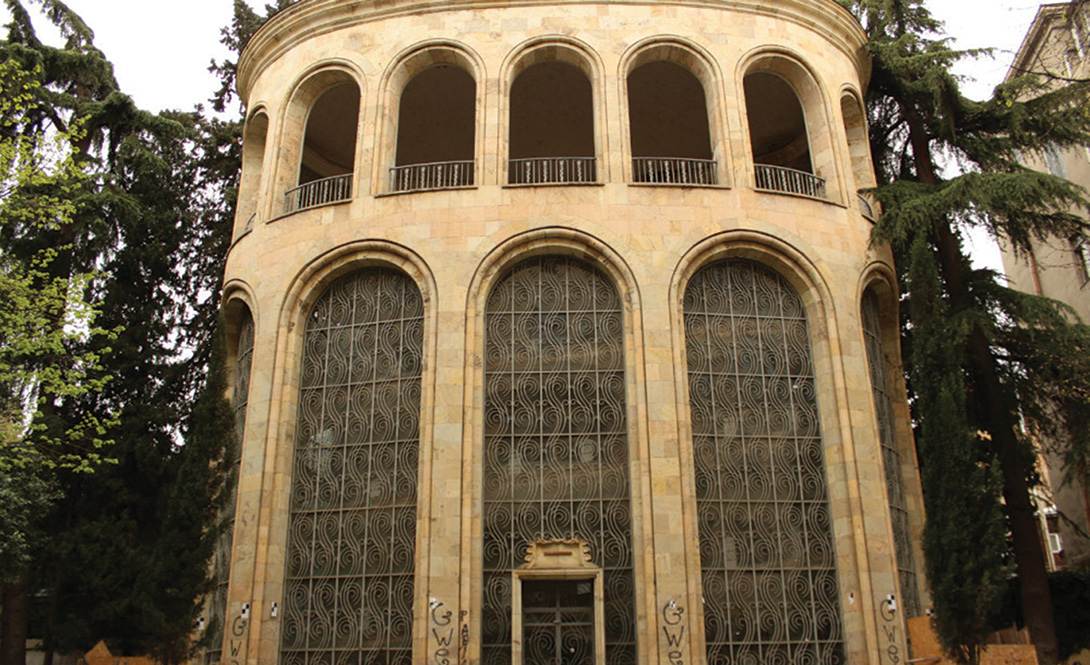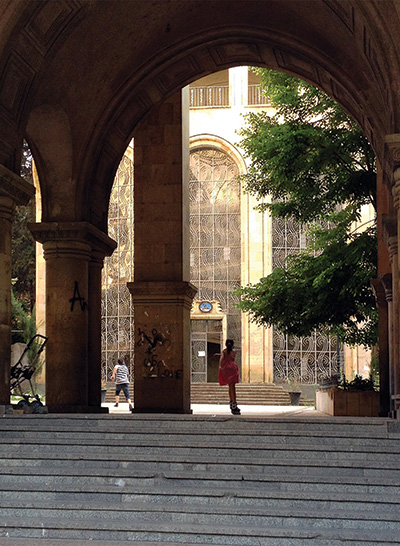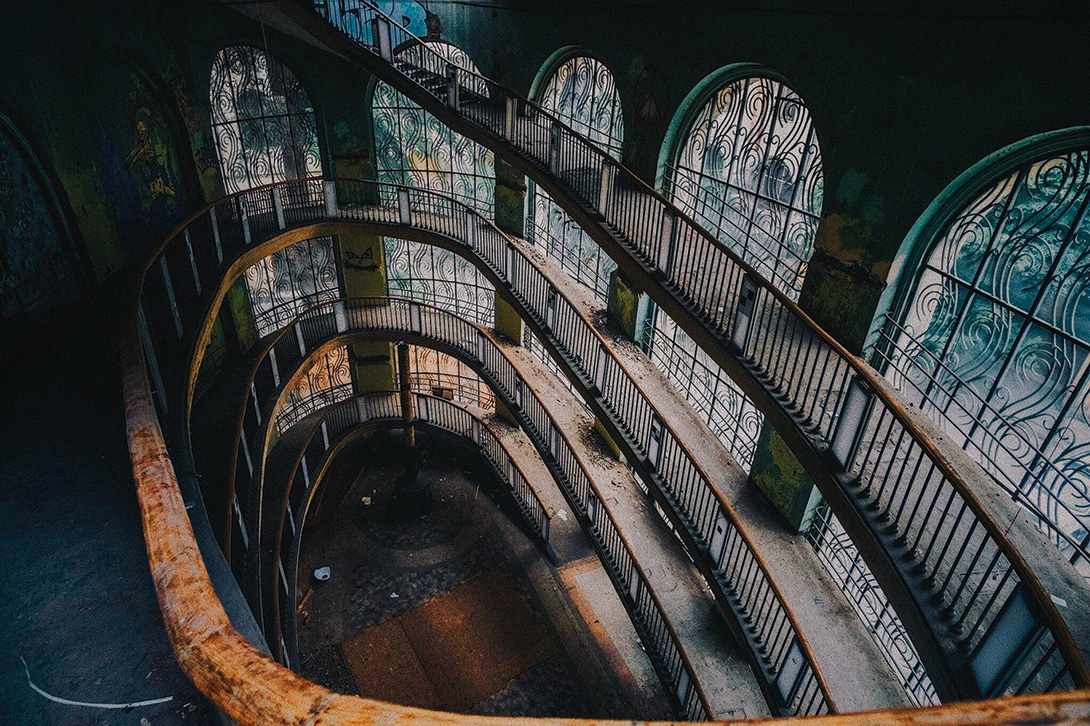Why Tbilisi’s last Soviet-era ropeway can’t get off the ground again

One of Tbilisi’s most unique, eye-catching structures is the old ropeway base station tucked away in the courtyard of the Georgian National Academy of Sciences off Rustaveli Avenue.
A curiosity that emotes the difficulties faced by the country since independence, the building houses the last of Tbilisi’s Soviet-era skyways that have yet to be put back into motion.
And a dark tragedy surrounding the ropeway is only partly to blame. The ropeway was first opened in 1959, and underwent renovations in 1987, just three years before a tragic accident took place on June 1,1990, resulting in 19 deaths and more than 40 people being injured. Most of the victims were children. The cable car was closed following the accident.
But since then, a concerted effort to get the city’s cableways up and running have seen a number of trams adorning the sky line in several locations, and several new ones are planned for the coming years, most visibly the ropeway that will connect Paragraph Hotel on Freedom Square with Convention Center – Tbilisi into the hills of Mtatsminda.
But the Mtatsminda cable car on Rustaveli Avenue continues to sit dormant. Talks about restoring the ropeway began in 2012, when the proposal was to move the station from Rustaveli Avenue to First Republic Square (formerly Rose Revolution Square), but nothing doing: 10 years on and restoration works have yet to even begin.
Several failed tenders and even suits against Tbilisi City Hall have hindered the process.
 The 1990 tragedy
The 1990 tragedy
Nearly 30 years after it was installed, the ropeway was renovated in 1987. The towers supporting the cables were reduced from three to two, and, in order to avoid large queues, larger cabins were introduced that could carry up to 40 people, as opposed to the old cabins which could only carry 25 in one go.
The accident on June 1, 1990 saw the hauling rope break—that day, the two cabins were carrying more people than they were supposed to, 46 and 47 passengers, respectively. The cabin en route to Rustaveli Avenue slammed into the lower station, killing and injuring several people. The second cabin, which had been approaching the Mtatsminda station, raced down the line at high speed. Near one of the towers, the cabin hit the broken hauling rope and the tower and was torn in two. Half of the cabin continued rolling down the mountain before hitting a six-story residential building below. Those in the other half of the cabin fell a chilling 20 meters onto rooftops of the buildings and the ground.
15 people died at the scene and four later passed away in hospital. 42 others received severe injuries. The circumstances surrounding the catastrophe only threw salt on the wound: most of the passengers were children on a sightseeing tour from an Akhaltsikhe-region school, visiting Tbilisi to celebrate Children’s Day.
Several parts of the tram system were dismantled immediately after the accident, and the remaining bits were recycled in the early 2000s; the towers and both stations remain intact.
After the accident, an investigation found that specialists had failed to install an emergency brake system for the new cabins, which may have prevented the fatalities.
Plans for renewal of the ropeway
The grisly history surrounding the ropeway is only half the story as to why this beautiful monument to Tbilisi architecture continues to sit neglected.
The first contract for the renewal of the aerial tram was signed in 2012. The lower station was supposed to be built on First Republic Square, however in 2015, it was decided the station would remain in its original home, the building of the Georgian National Academy of Sciences. The Austrian-Swiss company Doppelmayr/Garaventa Group agreed to manufacture the necessary parts for the ropeway system as well as assist in the process of installing them.
Despite finally reaching an agreement on the location of the station, renovation works were not launched; Tbilisi City Hall and Mayor Kakha Kaladze himself said that the delay was caused by families living in the vicinity of the Rustaveli Avenue station who refused to relocate.
Per the terms of the 2012 agreement between the Tbilisi City Hall and Mtatsminda Park, the cable car system was to have been completed by 2014.
Mtatsminda Park paid Doppelmayr 4 million EUR, and the latter manufactured the missing parts for reconstruction of the aerial tramway back in 2012. Due to the necessary preparatory works not being completed in Tbilisi, to this day, the parts are stored in the company’s European warehouses.
Mtatsminda Park even filed litigation against Tbilisi City Hall to recoup the money it paid for the new construction. However, the agreement that was reached between the Park and City Hall in 2020 states that the construction should be completed within the next 2 years, and, as a result of the new agreement, the lawsuit was withdrawn from the courts.
The future of the ropeway
“We’ve already prepared a project and are planning to announce a tender to select the construction company that will undertake it. The project will take between a year and a half to two years to finish,” said Mayor Kaladze back in September 2020. By then, an agreement with the residents near the Rustaveli Avenue station had been reached and the demolition of the residential buildings began shortly after.
The first tender was announced in November 2020 by Tbilisi Transport Company Ltd, a municipal company that operates public transportation in Tbilisi, but the tender proved unsuccessful, thus, a second tender was announced in December 2020.
Per the tender terms, a company undertaking the project would have to demolish the remaining residential buildings near the Rustaveli station, renovate the two stations, and install five towers necessary for the cable car system, among other construction obligations. The tender was open between January 13 and January 18, 2021. The timeframe for the project was set at 15 months.
A contender company was disqualified by the commission for a ‘lack of relevant experience.’ Therefore, the tender for the construction works failed for a second time as well.

In February 2021, a third tender was announced. Companies have been able to apply between March 25 and March 30, 2021, and the timeframe for construction has been extended and now amounts to approximately 18 months.
However, at the time of writing, no tender winner has been announced. After years of failed attempts to restore the ropeway, it is still unknown when Tbilisi residents and visitors will look at the mysterious building tucked away behind one of the city’s main arteries with anything more than a sense of perplexity and curiosity.
____________________________ ADVERTISEMENT ____________________________


